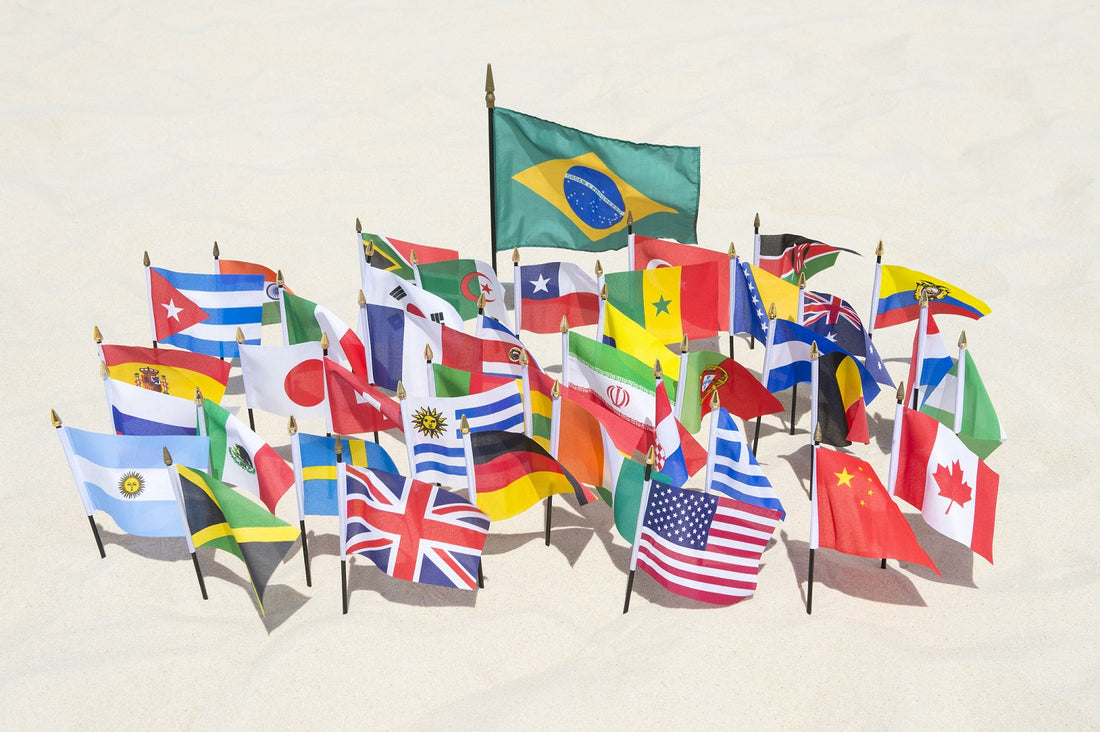
Cool Facts About Flags
Why do we have flags?

1) Where does the use of flags come from?
In earlier centuries, people decorated their spears, which showed their beliefs. Later people started to use ribbons, leather or silk on their spears to distinguish their group from another group. Early explorers always put crosses or some kind of marker down when they landed on newly discovered land, and later this changed to flags, in order to proclaim their presence or show their sovereignty.
2) Why do countries now have flags?
Flags show that we belong to a community, organisation or nation and that we share certain beliefs, goals, rules and regulations. Flags are now a label and every country has their own national flag. Flags are flown to show national pride and it is common for people to be extremely proud of their own national flag. Flags are commonly used in sporting events, to show participation, and for followers to show their allegiance and support.
3) How many flags are there?
It is a little tricky to give a definitive answer to this question, as it depends on what types of flags you are talking about. As lands can have more than one flag, for example the United Kingdom has a flag, but so does England, Scotland and Northern Ireland, but if you’re talking about the national flag of independent countries, the figure is said to be around 197, as according to our research the figure seems to vary according to different opinions!
4) Frequently used symbolism

Certain symbols and colours are used on flags by countries as they all have a meaning. Here are a few:
Cross: In ancient times the cross only symbolised the different points of the compass. However in the 4th century the cross was also taken as the symbol of faith.
Sun: The circle of the sun symbolises unity and energy.
Stars: Constellations of stars often represent energy, especially when depicting the night sky or star constellations. The flag of the USA is called “Stars and Stripes” and each star represents a state.
Square: The four even lengths of the square symbolise balance and equal opposites.
Some countries use specific symbolism, such as Canada, which features the maple leaf, its national plant. India feature the Ashoka Chakra, a navy 24 spoked wheel which represents the twelve links taught by Buddha. The first twelve spokes represent stages of suffering, while the following twelve spokes stand for, no cause no effect. China use red on their flag as they considered it a lucky colour and black, red and gold are the national colours of Germany.
5) The Union Jack

The Union Jack is the flag of the United Kingdom; this also has a specific design for a specific reason as it incorporates the national flags of three UK countries; England, Scotland and Northern Ireland, if you look closely you can see the elements of the three flags.
5) Other flags
It isn't just countries who have flags…
The Olympic flag – The five ring symbols are icons. The rings are blue, yellow, black, green and red, with the blue ring always high on the left, nearest the flag pole. These rings represent the five continents joined in the Olympic Games – the colours were chosen to represent the flags of these countries (more proof of how important flags are to a nation). Every country’s flag has at least one of the colours of the rings in it.
The Royal Standard – This flag is well-known in London for flying above Buckingham Palace, but it actually flies above all royal residences, as it too has a message to tell. It is flown only when the sovereign is present. So, if the Union Jack flag flies above Buckingham Palace, Windsor Castle or Sandringham House instead, it signals that the Queen is not in residence.

Semaphore Flags – The system of Semaphore uses flags to communicate a signal or message across a distance. The message is spelt out letter by letter using the below positions. It is commonly associated with the Royal Navy, where sailors used it to talk to their comrades on other boats (see, there was a way to communicate before the times of mobile phones!)

The Skull and Crossbones – Not all flags are nice! The skull and crossbones is a flag featuring a skull and two crossed bones, which in the late middle ages, depicted death. Today the symbol itself is often used to warn of danger. The flag that is most commonly identified as the Jolly Roger (white skull and crossbones symbol, or a skull and two crossed swords on a black flag) was used during the 1710s by a number of pirate captains and has gone on to become the most commonly recognised symbol of pirates!

So now you know more about why flags are used. We have plenty on our website for you to look at and purchase here https://piggotts.co.uk/

